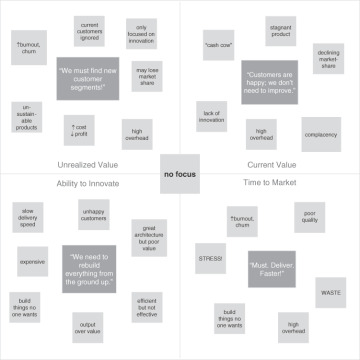Objectifying Narratives
Narratives are stories we tell ourselves. Sometimes, they can be negative and detrimental, especially when no evidence supports that narrative. That is what happened at WeChill.
Executives at WeChill began thinking their platform needed to be more coherent and certain features were no longer relevant. One of these features they wanted to remove was the user reviews section. Data illustrated that many users submitted negative recommendations. They felt these submissions could have been more helpful and caused users to miss out on good shows because of the negative reviews. Executives believed personalized recommendations were far more important to a person viewing decisions and could be controlled by the platform.
A major investment into a recommendations engine would become the primary way for users to discover new content. The executives trusted their recommendation algorithm over the voice of the users. They believed removing user reviews would streamline the platform and make it easier for users to find relevant content.
The decision had unexpected consequences. Users who had relied on user reviews to find new content were left without a valuable source of information. The content recommendations they received from the recommendation engine were not as relevant to the reviews coming from users in similar demographics.
The company’s reputation suffered as users took to social media to express their irritation with the platform’s latest change. The decision to remove user reviews also affected user engagement, as some users began to consider switching to other streaming platforms that still had user reviews.
The executives at WeChill issued a statement saying they had listened to user feedback and would reinstate the user reviews section. However, the damage had already been done. WeChill’s reputation took a hit, and users had lost trust in the platform.
In the latest at WeChill, executives made data fit their beliefs. They did not listen to the data and let that information drive their decisions. Making data fit a narrative rather than driving a narrative based on data is dangerous, and WeChill paid the price for it.
When a narrative is created and data is morphed into fitting that narrative, we often find that a key value area (KVA)—and related goals centered around it—ends up being overemphasized. Figure 5.3 illustrates what may happen if each KVA becomes the singular focus while the others are ignored.
It is important to know if your organization puts too much emphasis on a particular KVA. Do you recognize some of the negative impacts in Figure 5.3 that occur when a KVA has a bias? Are your goals emphasizing one of them?

FIGURE 5.3 Too much focus on only one KVA can have consequences.
Here are some themes we have found when overfocusing on a KVA:
Unrealized Value (UV): If you are focused entirely on UV, you might find something current or existing customers love. But overfocusing on UV can lead to current customers feeling disengaged because you are not serving their needs. It can cause you to neglect your cash cow products. Also, it can cause your teams to become less effective because internal pressures are to build new things, not to refine what is there.
Current Value (CV): Current customers might be elated by the focus you put on them when you emphasize CV. However, employees may leave or feel bored because the work is not exciting. You might miss out on fulfilling satisfaction gaps to acquire new or existing customer’s unmet needs. You may ultimately sacrifice your ability to adapt to the market as your solution becomes tailored to existing customers.
Time to Market (T2M): Going faster helps you test hypotheses of value more quickly, making the time to validate those hypotheses shorter. But overfocusing on speed leads to issues with quality and decreased effectiveness to deliver, which ultimately limits your ability to deliver with sustainable speed. We discussed this at length in Chapter 3.
Ability to Innovate (A2I): Making your delivery more effective enables you to deliver a more desirable result in the long term. But chasing efficiencies and effectiveness for long periods of time results in missing market opportunities in both UV and CV.
If you find yourself overfocused on a particular KVA, the first step toward curing that overfocus is to make it transparent. Highlight why other KVAs and a holistic approach may be important for your team and organization. It is okay to focus on a KVA for a short period of time, but it is not a viable long-term strategy. Ask what behaviors might be occurring in your organization and within your team because of that single focus. What should you be focused on right now?